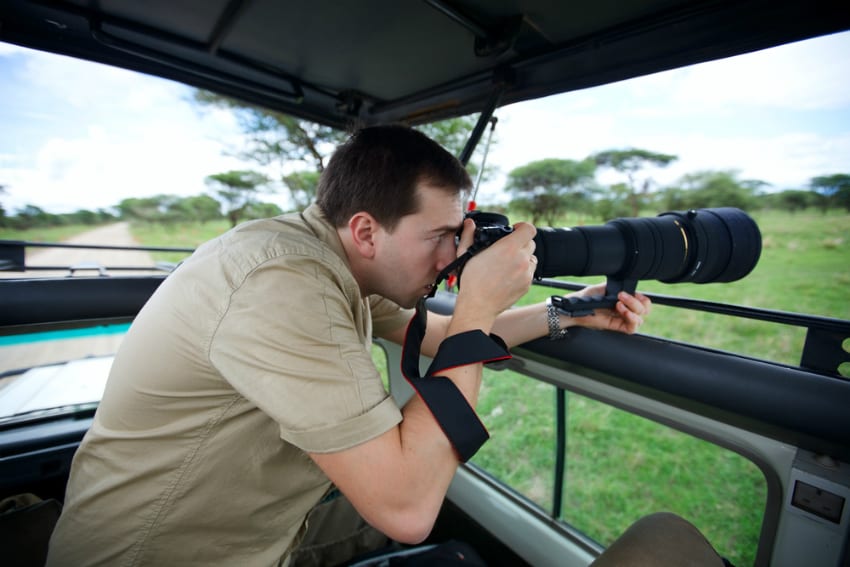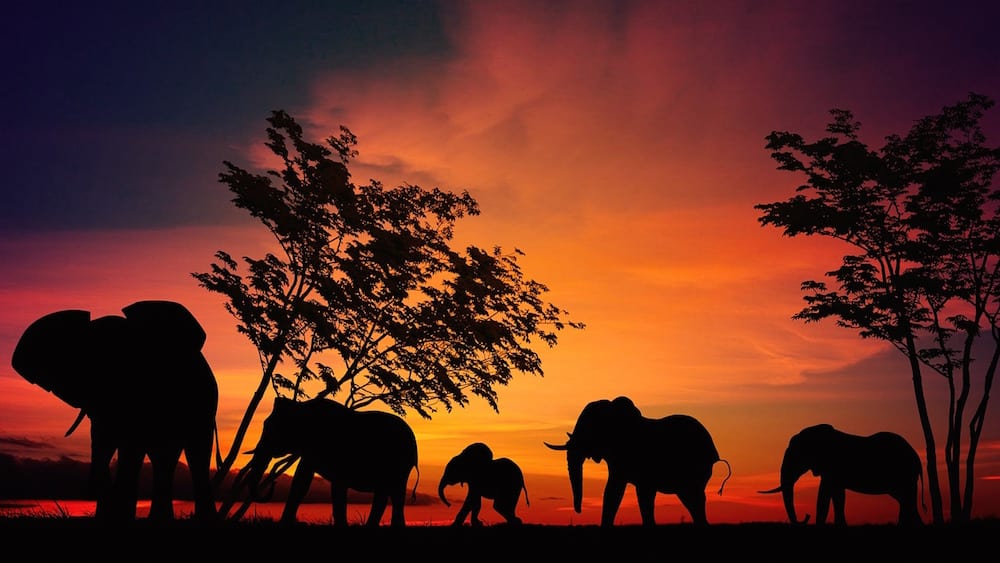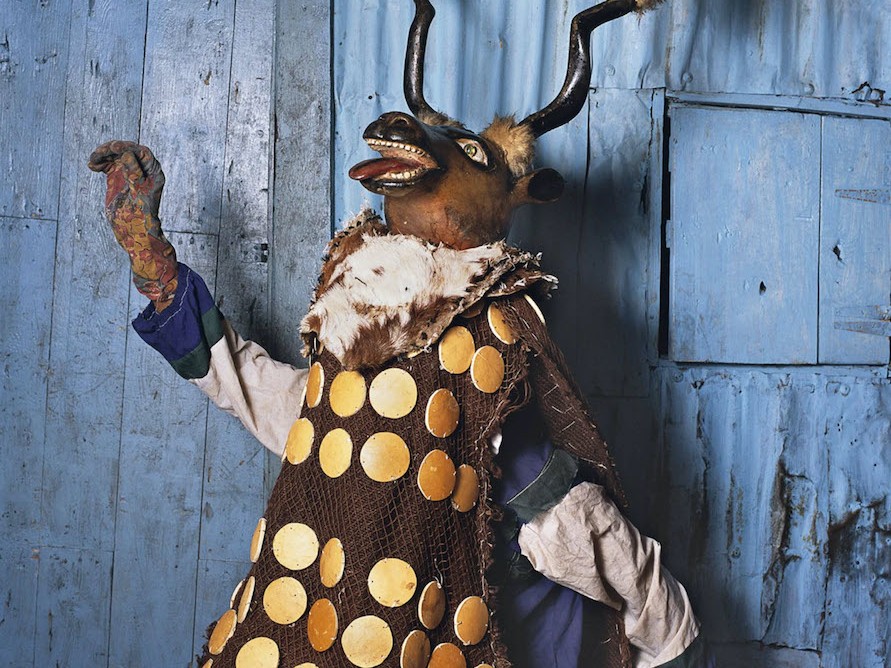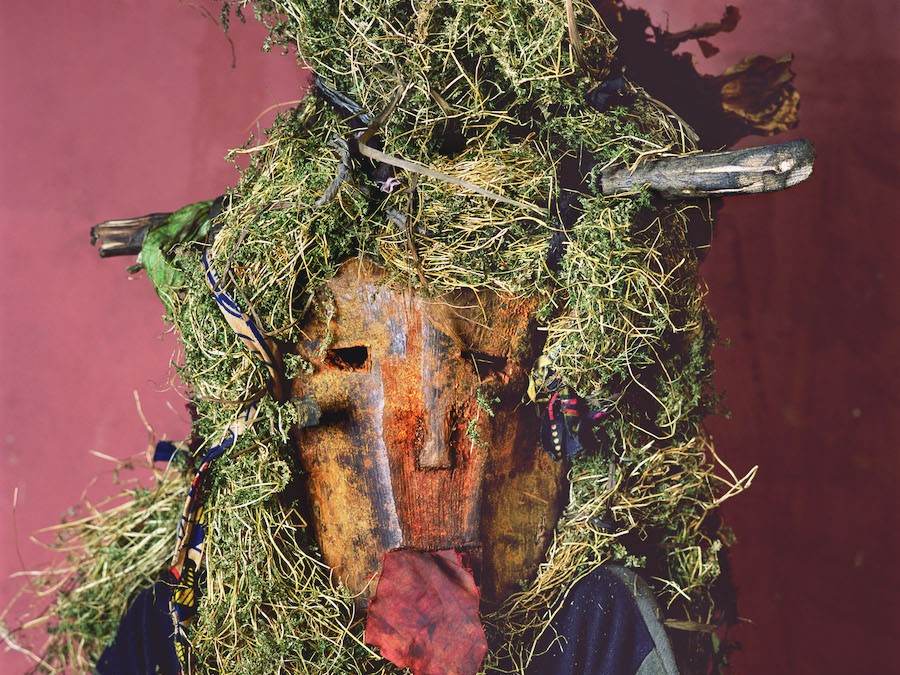Share this!
Safari Photography Tips for Beginners
If you want your safari pictures to be extraordinary rather than ordinary, you’re going to have to step up your game in terms of trip planning, composition, and gear. The following safari photography tips for beginners will give newbies an idea of what it takes to get professional-quality pictures while in the bush.
Tour Type
Speak to your travel agent before booking your safari to make sure your photo-taking opportunities won’t be limited. While some safaris drive you right up to the animals, others have you view them from a distance, or feature animals that spend a lot of time hiding. (And be aware that some parks, like Sehlabathebe National Park in Lesotho, don’t have any big game.)
Also find out if there are any rules in the park or game reserve you are headed to: sometimes sanctuaries have restrictions on picture-taking, and others places may restrict you from snapping certain species because the sound or look of the equipment might scare the animal.

If you intend to do a lot of high-quality photography while on safari (as opposed to just souvenir snapshots), it’s best to go out with a very small private group (with four people, tops, in your vehicle). The smaller the group, the closer you can get to the animals, and the more time and flexibility you’ll have.
If you’re a hardcore shutterbug (or hoping to become one), you might want to consider a specialized photography safari led by a professional wildlife photographer. These guides have intimate knowledge of the terrain and game, and can explain the best ways to capture movement and light. One of the top guys is Boyd Norton, who has been leading photo tours in Tanzania for decades.
Equipment/Gear
A long lens is crucial; it lets you shoot from far away, so the animals aren’t aware of you and won’t spook. For a digital SLR camera you’ll want at least a 300 millimeter lens. Point-and-shoot cameras should have 10x optical zoom. Serious DSLR users may want to consider bringing two camera bodies and two different length lenses, to minimize lens changes (which allow dust to get into the sensor). A super-long lens (like a 100-400) and a shorter one (like a 24-105) should do, since critters have been known to occasionally walk right past your vehicle — in which case 400mm of zoom would not be much help. A 1.4x or 2x extender is also an option if you plan to be in a place where game is far off in the distance.

Shakiness is a problem for 300-millimeter-and-up lenses, so a tripod or monopod is essential. If you’re shooting from a vehicle, consider a window mount to assure a steady shot from inside, or a beanbag or short tripod for roof shots.
Another essential is multiple batteries and multiple memory cards. If you bring a small portable hard drive, you can back up your pictures every evening then clear the memory cards to make room for more photos. Hard drives are also a great way to view images without killing the battery on your camera. If you don’t have spare batteries, you might be able to hook up a car charger to the safari vehicle. Obviously you’ll need to find out in advance what type of vehicle you’ll be in, in order to get a compatible charger.
And lastly, bring lots of plastic bags and store your equipment in them when you are not using it, even if only for a few minutes. Dirt, dust and water are the enemy of camera equipment, and you don’t want your photos ruined by a thin film of dust on your lens. Of course, if you have a more expensive weather sealed camera, this won’t be an issue.
Keep your equipment in mind when selecting routes and modes of transportation. You might be flying on small planes with carry-on weight limits, or going through high crime areas where bulky, expensive equipment could make you a target for theft. And sometimes there are high taxes for transporting certain equipment from one country to another.
To lessen your load, some safari companies that specialize in photo safaris (such as Cape Fox Tours & Safari) provide peripheral equipment (i.e. tripods, lenses), so be sure to check in advance and find out not only what they have, but whether your camera is compatible with it.

Composition
There’s a lot that can make your safari photos look cluttered: tall grass, tree branches, and even other animals. Trust in your viewfinder; hold your camera steady and let it focus on the main subject. Just keep in mind that the depth of field appears different in the viewfinder than it will in the final product, and sometimes you need to bring the lens in to get a larger aperture.
Tell a story: the point of safari photography isn’t just “photograph animals in the wild.” What are they doing? Is it a lioness bonding with her cub? A leopard savoring its kill in a tree? A bird drinking water from a flower petal? Think about the situation unfolding before you and figure out the best way to frame it, in order to convey that action to viewers.
Think about light: pro photographers know that the “golden hour” just after sunrise and just before sunset results in the best photos. The light is at its most magnificent then, and imparts deeper colors to everything it illuminates. The sunsets and sunrises are gorgeous too, especially if you can catch animals in silhouette. Luckily, sunset and sunrise are when you’ll be most likely to be out on safari, as these are peak times for animal activity.

Etiquette
Don’t use a flash at waterholes at night or on game drives where you can easily spook animals.
Some native African people have issues with being the subject of photographs, so when in doubt ask the person for permission, or ask your guide.
Other resources
The following websites, books and courses offer great tips and advice on taking excellent safari photos:
- Digital Photography School
- ByThom.com
- “Africa’s Top Wildlife Countries,” by Mark Nolting, president of African Adventure Company
- If you don’t have a trip to Africa planned but want to hone your skills, Africa Adventure Consultants periodically offers online webinars taught by professional safari photographer Blaine Harrington. (They also offer actual photo safaris in Botswana and Tanzania.)



